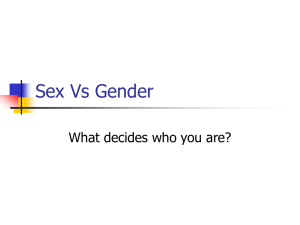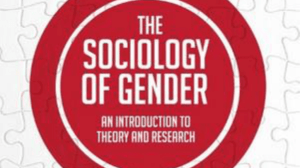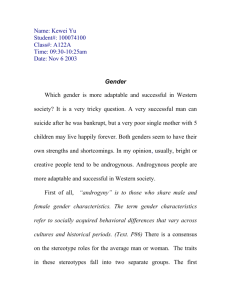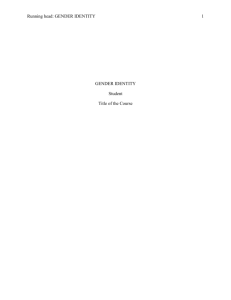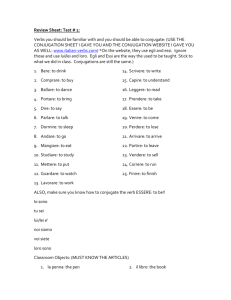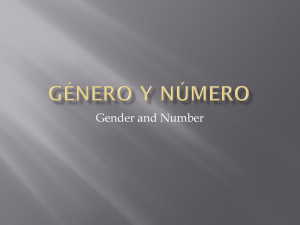Janka Stoker
advertisement
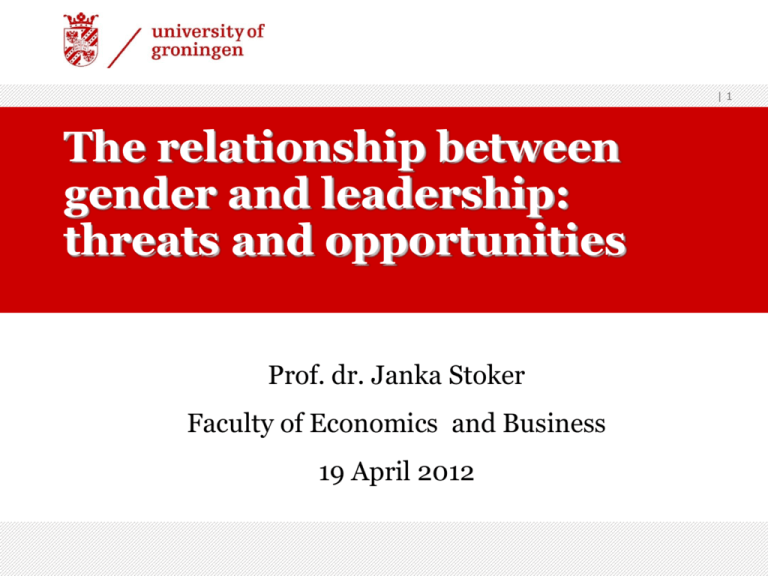
|1 The relationship between gender and leadership: threats and opportunities Prof. dr. Janka Stoker Faculty of Economics and Business 19 April 2012 Washington Post, ‘On Leadership’ Leadership is one of those magic things that's hard to define but pretty easy to identify when you see it. And in recent years, it seems to have been in short supply. › Bradlee and Pearlstein, dec. 2008 2 Would we be in this mess today if it had been Lehman Sisters? |3 Content 1. Is there a difference between male and female leaders? 2. What kind of ideal leaders do ‘we’ look for? 3. Confronting 1 and 2 -> What can be done? |4 What is leadership? › Leadership involves a process whereby intentional influence is exerted by one person over other people to guide, structure, and facilitate activities and relationships in a group or organization (Yukl, 2006). › This can be done by leadership styles/behaviors, traits, motives, activities, etc. › Today, we focus on styles of leaders |5 The romance of leadership › James Meindl: “… we may have developed highly romanticized, heroic views of leadership.” › So… › If performance of an organization is either very good or very bad, it is all because of leadership. |6 |7 1. Is there a difference between male and female leaders? The feminine advantage (Gary Yukl) |8 Do women and men indeed differ in leadership? › Meta-analysis, 45 studies (Eagly, Johannesen-Schmidt & Van Engen, 2003) › Transformational, transactional, and laissez-faire: • Transformational = inspiring, be a role model, state future goals, individualized consideration (mentor and empower followers) • Transactional = appeal to self-interest, calrifying responsibilities, reward for performance • Laissez-faire = non-leadership › Results: • Female leaders are more transformational • Male leaders show more laissez-faire leadership • Differences are small › Conclusion Eagly et al (2003): leadership styles on which women exceeded men relate positively to leader’s effectiveness › So: Yukl is right?? Two dutch studies on observed leadership | 10 • Intermediair 2005: 3200 subscribers describe their own (current) manager, in terms of masculinity and femininity: • Masculine leadership = taking risks, result and task oriented, dominant, strong personality • Feminine leadership = caring, human orientend, communicative, sensitive • Leads to four different types of leaders (Bem, 1973): • Undifferentiated (no strong personality, unsensitive, unconsiderate) -> relates to laissez-faire • Masculine (powerfull, independent, dominant and willing to take risks) • Feminine (warm, sensitive, considerate to others, communicative) • Androgynous (powerful, strong personality, communicative, sensitive) -> relates to transformational (M&O, 2007, 1, pp 5-17) Results Intermediair-study 2005 | 11 • Is there a ‘the feminine advantage’? • No: male and female leaders are alike in the feminine and masculine category. • However, there is a striking difference between undifferentiated and androgynous (cf Eagly et al!). Undifferentiated Feminine Masculine 32% 25% 22% 21% Female mgr 22% 27% 20% 31% Male mgr Androgynous Results 2005 (continued) | 12 • Undifferentiated leaders get the lowest ratings, androgynous leaders are ranked highest: Satisfaction with manager (grade) Job satisfaction Perceived team effectiveness Undifferentiated 5,6 3,5 3,4 Feminine 7,1 3,7 3,5 Masculine 6,7 3,7 3,7 Androgynous 7,8 4,0 3,8 • So: female leaders get high grades, but not because of their femininity: they seem to be able to combine both masculine and feminine characteristics. Results 2010: same direction › Again, employees are not specifically happy with masculine leaders. › People still prefer leaders that combine both feminine and masculine characteristics. | 13 Conclusions: differences in leadership? › Although differences are small, results do point into the direction that females show somewhat different leader behaviors than men › Be aware: this does NOT imply in anyway a ‘nature’ difference › These behaviors are also strongly related to effectiveness › So… why are there then still so little female leaders? › Two often heard explanations were also studied in the 2005 Intermediair-study: | 14 Results 2005: 1. ‘Women are less ambitious’, but results show: a) No differences in ambitions between highlyeducated men and women b) Participating female managers even indicate that they consider their private life less inportant tham male managers 2. ‘Women are less self-confident’, but results show: a) No differences in self-confidence between highlyeducated men and women › So again… why then so little female managers? | 15 | 16 2. What kind of ideal leaders do ‘we’ look for? What is this? | 17 | 18 | 19 And how does the stereotype of the ideal leader look like? The ideal leader… | 20 …is still masculine | 21 This creates a ‘double bind’ for female leaders 1. The stereotypical ideal leader is masculine 2. The stereotypical ideal woman is feminine SO: Being a female leader always creates a problem: you are either seen as a ‘good’ leader, but a ‘bad’ (hard, tough) woman OR you are seen as a ‘good’ (warm, nurturing) woman, but a bad leader So, in the past at least, female leaders had to chose the first option in order to be successful… And after the financial crisis? The ideal leader in 2010 is indeed … Results Dutch studies in 2005 and 2010 › Respondents: my ideal leader is masculine › 2010 with crisis salient: the ideal leader is masculine, and particularly less feminine! › And be aware: especially male managers have these strong assumptions about ideal leadership… Conclusions on ideal leaders ‘we’ look for | 27 › Stereotypes are quite persistent, among males and females › The financial crisis seems to strengthen the need for leadership that was at the root of this crisis… › There is a strong gap between: • actual experiences of people when assessing/rating their own leader, and • Their description of an ideal leader › There is hope for academia: a meta-study of Koenig et al (2011): in ediucational organizations, stereotypes of leaders are LESS masculine › But there is also a downer in academia… Stereotypes in recommendation letters (Madera et al, 2009) › Study on differences in masculine (agentic) and feminine (communal) characteristics in letters of recommendation, for men and women, applying for academic positions › Results: • women were described as more feminine/communal and less masculine/agentic than men • communal characteristics have a negative relationship with hiring decisions in academia that are based on letters of recommendation › And it is known that letters of recommendation continue to be heavily weighted and commonly used selection tools, particularly in academia And current times of crisis amplify this… › Henriette Harman (Leader House of Commons, UK) states that there are more and more Boards that are becoming ‘men-only’. Argument: ‘because the economy is in difficulty we should put equality on the backburner. It is a luxury we cannot afford right now’ (Sealy, Vinnicombe & Dolder, 2009). | 29 | 30 3. So confronting 1 and 2: …What can be done? Let’s be realistic: it is difficult to change! › http://www.youtube.com/watch?feature=player_det ailpage&v=FSIkjNaICsg So just ‘wait and see’ is not an option › Dissertation of Marieke van den Brink (2010): Behind the Scenes of Science. Gender practices in the recruitment and selection of professors in the Netherlands. She advices: • Be aware of the ‘similar-to-me’ effect and stereotypes • Monitor and stimulate female talent • Organise mentoring, networking and support • Recruit in open procedures • Have clear selection procedures and have a significant amount of females in the selection committee • Comply or explain after selection ‘20 in 2020’ (LNVH): indeed, action is needed | 33 How? Some input for the discussion café • • › › › | 34 Quota: pressure from outside (Neelie Kroes: “I am proud to be quota’ed”) Special programmes for females, such as at RUG: Rosalind Franklin programme The Rosalind Franklin Fellowship Programme offers a career path that will eventually lead to a professorship. The Rosalind Franklin Fellowship Programme is an initiative of the University of Groningen that opens the way to professorships for talented female academics. At the start of their research, the Fellows immediately receive a budget to cover the costs of a PhD position and related facilities. If the programme is completed successfully, the Fellow will be appointed an Associate Professor within five years. After another period of five years, she will be appointed a Full Professor. The University’s requirements for participation in the Rosalind Franklin Fellowship Programme are accordingly high. The programme searches for young female academics who are internationally considered exceptionally talented in their field of study. They must already have published research in top academic journals and have successfully raised external funding. All three rounds have turned out to be very successful. Nearly all of the first twenty Fellows have in the meantime been appointed as Associate Professors.
